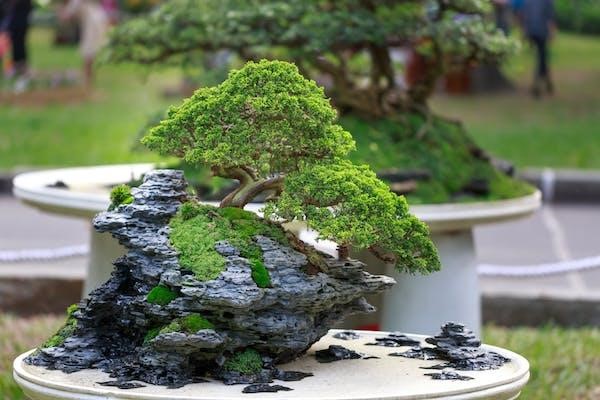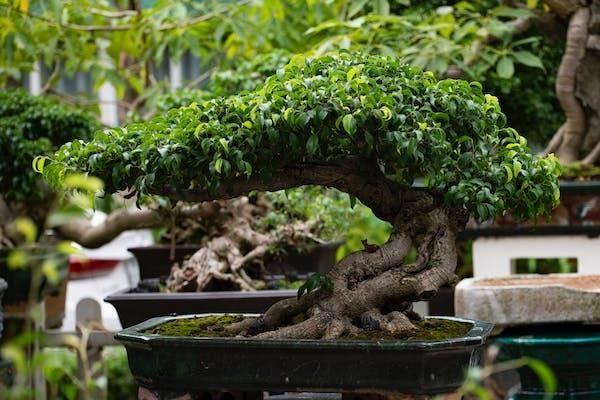How Often Do I Need to Water a Japanese Larch Bonsai Tree
Water a Japanese Larch Bonsai tree every 2-3 days to keep the soil consistently moist. Japanese Larch Bonsai trees require regular watering to maintain their health and prevent drying out.
Providing water every 2-3 days ensures that the soil remains moist, creating an optimal environment for the tree’s roots. This frequency allows the tree to access the necessary moisture without saturating the soil.
It is important to monitor the tree’s moisture levels closely, adjusting the watering schedule as needed based on factors such as weather conditions and soil type.
By maintaining an adequate watering routine, you can ensure the proper growth and vitality of your Japanese Larch Bonsai tree.
Factors Affecting Japanese Larch Bonsai Watering Frequency
The Watering frequency for a Japanese Larch Bonsai Tree depends on various factors such as the season, weather conditions, soil moisture, and the tree’s specific needs. It is crucial to monitor these variables closely to determine the right watering schedule for your bonsai tree.
Climate and Environment:
The climate and environmental conditions where your bonsai tree is situated have a significant impact on how often you should water it. Hot and dry climates require more frequent watering, while cooler and more humid environments allow for less frequent watering. Understanding your specific location is crucial for determining the right watering schedule.
Container Type and Size:
The choice of container material and its size also influence the watering frequency. Containers made of ceramic or clay retain moisture more effectively than plastic or metal ones due to their porous nature. Larger containers hold more soil and moisture, reducing the need for frequent watering, whereas smaller containers dry out more quickly and demand more attention.
| Container Material | Moisture Retention | Container Size | Watering Frequency |
| Ceramic or Clay | High | Larger | Less Frequent |
| Ceramic or Clay | High | Smaller | More Frequent |
| Plastic or Metal | Low | Larger | Frequent |
| Plastic or Metal | Low | Smaller | More Frequent |
It Illustrates the relationship between container material (ceramic/clay or plastic/metal), moisture retention (high/low), container size (larger/smaller), and the resulting watering frequency for Japanese Larch Bonsai Trees.
How Can You Obsere The Moisture Level Of The Soil?
Checking The Soil Moisture
One of the key factors in successfully watering your Japanese Larch Bonsai tree is to observe the moisture level of the soil. By checking the soil moisture regularly, you can ensure that you provide the right amount of water for your tree’s needs. Here’s how you can check the soil moisture:
- Insert your finger about 1-2 inches deep into the soil near the root system. If the soil feels dry at this depth, it’s a clear indication that your bonsai tree needs watering.
- However, if the soil feels damp or moist, it means that your tree still has enough moisture and doesn’t require watering just yet.
Note: Keep in mind that the moisture levels can vary depending on the climate, humidity, and the bonsai tree’s specific needs.
Using A Moisture Meter
If you want to take the guesswork out of determining the moisture level of the soil, using a moisture meter can be incredibly helpful. This tool provides a more accurate reading of the moisture content and helps you make informed decisions regarding watering. Here’s how to use a moisture meter:
- Insert the probe of the moisture meter into the soil, near the root system of your Japanese Larch Bonsai tree.
- Wait for a few seconds until the reading stabilizes.
- The moisture meter will display the moisture level as a percentage. If the reading falls below a certain threshold (typically around 30%), it indicates that your bonsai tree needs watering.
- On the other hand, if the reading is above the threshold, it means that the soil still has enough moisture, and watering can be delayed.
Pro Tip: Remember to test the soil moisture at different locations in the pot to get a comprehensive understanding of the overall moisture level.
Best Practices For Watering A Japanese Larch Bonsai Tree
Proper watering is crucial for the health and vitality of a Japanese Larch bonsai tree. As an owner, it is essential to understand the specific watering needs of this type of tree to ensure it thrives in your care.
Proper Watering Techniques
Mastering proper watering techniques is essential to maintain the optimal moisture levels for a Japanese Larch bonsai tree. The goal is to strike a balance between providing enough water for the tree’s needs without drowning its delicate roots. Here are a few practical tips to keep in mind:
- Check the soil: Before watering, always check the soil’s moisture level by inserting your finger or a small wooden stick into the soil. If it feels slightly damp, hold off on watering until it becomes slightly dry to the touch.
- Watering method: To ensure water reaches the root system, use a fine nozzle or watering can with a narrow spout. Water the soil evenly, starting from the edges and working your way towards the center.
- Watering frequency: The frequency of watering can vary depending on factors such as the climate, time of year, and pot size. As a general guideline, aim to water the Japanese Larch bonsai tree when the soil feels slightly dry about an inch below the surface.
- Consistency: Consistency is key when it comes to watering a bonsai tree. Establish a regular watering schedule and stick to it, adjusting as needed based on the tree’s response and environmental conditions.
Avoiding Overwatering
Overwatering is a common mistake that bonsai enthusiasts make, often resulting in root rot and other detrimental effects on the tree’s health. To avoid overwatering your Japanese Larch bonsai tree, follow these helpful guidelines:
| Main Words | Guidelines for Avoiding Overwatering |
| Drainage | Ensure proper drainage holes in the pot to prevent water pooling and root suffocation. |
| Water retention | Use well-draining bonsai soil to prevent waterlogged conditions and avoid regular garden soil. |
| Monitor runoff | Check for excessive water runoff after watering, adjusting your watering habits if needed. |
| Observe signs of overwatering | Pay attention to symptoms like yellowing leaves, wilting, or a foul odor, indicating root suffocation and the need for watering adjustments. |
Addressing Underwatering
Underwatering can also have detrimental effects on the health of a Japanese Larch bonsai tree. To address underwatering, consider the following recommendations:
- Monitor soil dryness: Keep a close eye on the soil’s moisture levels to ensure it doesn’t become too dry. If the soil feels excessively dry, it’s time to water the bonsai tree.
- Adjust watering schedule: If you find that you consistently underwater your bonsai tree, consider adjusting your watering schedule to provide more frequent watering. However, always prioritize proper drainage and avoid overcompensating with excessive water.
- Mist the foliage: In addition to regular watering, misting the foliage of the Japanese Larch bonsai tree can help provide supplemental humidity, preventing the tree from drying out too quickly.
Adjusting Watering Frequency Throughout The Year
Proper watering is crucial for the health and vitality of your Japanese Larch Bonsai Tree. As the seasons change and the weather fluctuates, it’s important to adjust your watering frequency accordingly. By understanding the seasonal watering needs of your bonsai and adapting to environmental changes, you can ensure your tree receives the optimal amount of water at all times.
Seasonal Watering Needs
The watering needs of your Japanese Larch Bonsai Tree will vary depending on the time of year. During the warmer months, typically spring and summer, your bonsai will require more frequent watering due to increased evaporation and growth.
In contrast, the cooler months, such as fall and winter, will require less frequent watering as the tree enters a state of dormancy.
It’s important to monitor the soil moisture level to determine when to water your bonsai tree. Stick your finger about an inch into the soil, and if it feels dry, it’s time to water.
Avoid overwatering, as it can lead to root rot, fungal diseases, and other issues. Aim for moist, well-drained soil that allows oxygen to reach the roots.
Adapting To Environmental Changes
Environmental factors such as temperature, humidity, and sunlight can greatly impact the watering needs of your Japanese Larch Bonsai Tree. For instance, during hot and dry periods, your bonsai may require more frequent watering to compensate for increased evaporation.
On the other hand, if the weather is cooler and more humid, you may need to water less frequently to prevent waterlogging.
Another aspect to consider is the location of your bonsai tree. If it’s placed indoors, it may require more frequent watering due to the lack of natural rainfall and the artificial drying effects of heating systems.
Conversely, if your bonsai is positioned outdoors, it may receive sufficient moisture from rain, reducing the need for frequent watering.
Be observant and attentive to your bonsai’s appearance and foliage. If the leaves appear wilted or droopy, it may be an indication that the tree is either overwatered or underwatered.
Adjust the watering frequency accordingly and closely monitor the tree’s response.
Suggested Watering Schedule
While there isn’t a one-size-fits-all watering schedule for Japanese Larch Bonsai Trees, the following table provides a general guideline that you can adapt based on the specific needs of your tree:
| Season | Watering Frequency |
| Spring/Summer | Every 1-2 days |
| Fall | Every 3-4 days |
| Winter | Every 5-7 days |
Frequently Asked Questions
How Often Should I Water A Japanese Larch Bonsai Tree?
The watering needs of a Japanese Larch Bonsai Tree will vary depending on factors such as the weather, humidity levels, and the size of the tree. Generally, it is recommended to water the tree thoroughly when the top layer of soil feels dry to the touch.
This may require watering once or twice a week during hotter months, while less frequent watering may be needed during cooler months.
Can I Overwater My Japanese Larch Bonsai Tree?
Yes, overwatering can be detrimental to the health of a Japanese Larch Bonsai Tree. It is important to avoid keeping the soil constantly wet, as this can lead to root rot and other issues. Always ensure that the soil has proper drainage and water the tree only when necessary.
What Are The Signs Of Underwatering A Japanese Larch Bonsai Tree?
If a Japanese Larch Bonsai Tree is not receiving enough water, you may notice signs such as wilting leaves, dryness and brittleness of the soil, and the tree appearing overall unhealthy. It is crucial to monitor the moisture levels and adjust your watering routine accordingly to prevent dehydration and keep the tree thriving.
Conclusion
Watering a Japanese Larch Bonsai tree requires a delicate balance. It is crucial to monitor the moisture levels and adjust the watering frequency accordingly. Overwatering can lead to root rot, while underwatering can cause dehydration. By observing the tree’s needs, considering environmental factors, and employing proper watering techniques, you can help your Japanese Larch Bonsai thrive and maintain its beauty for years to come.


